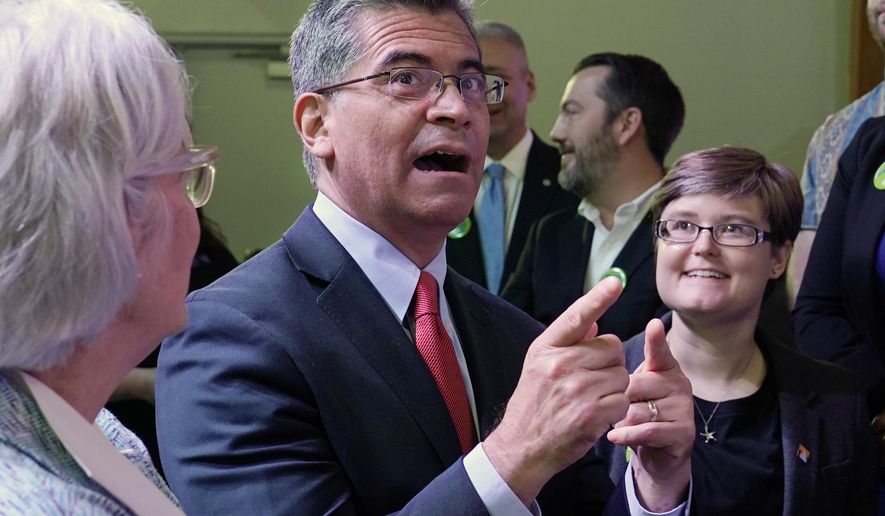More than 2 million people have selected an Obamacare plan since President Biden reopened the marketplace in February, the administration said Wednesday, trumpeting an “all-time high” in enrollment as it promotes supercharged subsidies that patched affordability gaps in the law.
Health Secretary Xavier Becerra said 1.5 million people enrolled on HealthCare.gov after Mr. Biden, citing the pandemic, launched the special enrollment period. The website serves 36 states.
An additional 600,000 people have signed up through state-run insurance portals, Mr. Becerra said.
The websites, or “exchanges,” allow consumers to select private plans and qualify for income-based subsidies that slash their premiums.
Democrats boosted those subsidies in their coronavirus relief package earlier this year, fueling interest in the program that welcomed sicker persons into the individual market in 2014, pricing some healthy persons out of coverage.
Officials said 2.5 million existing customers have returned to HealthCare.gov since April 1 to see if they can get a better deal, given the beefed-up federal help.
The federal marketplace and state-run websites typically attract 8 million to 10 million customers per year during standard enrollment periods in the fall, giving the program a steady customer base but not as many users as Obamacare’s framers envisioned.
The administration said overall enrollment in Obamacare had reached 11 million as of February. Officials on Wednesday were unable to provide an official enrollment figure that factored in special-enrollment customers but felt confident they were setting records.
“It is a fair assumption that it is at an all-time high,” said Chiquita Brooks-LaSure, administrator of the Centers for Medicare and Medicaid Services.
The Trump administration, which repeatedly sought to curtail or replace Obamacare, rejected calls for a special enrollment period earlier in the pandemic. It said people who lost their jobs were eligible to reenter HealthCare.gov and select a plan, anyway.
But Mr. Biden embraced the idea and funded a public awareness campaign as he tries to entice more customers into the program he championed alongside then-President Obama in 2010.
The special enrollment period was supposed to last from mid-February to mid-May, but Mr. Biden extended it to August, prompting states with their own portals to follow suit.
For these states, the decision to boost subsidies “was an important reason to open up the enrollment period and extend it,” Ms. Brooks-LaSure said.
Mr. Biden’s coronavirus bill temporarily increased the assistance across the board and made people earning over 400% above the poverty line eligible for federal assistance for the first time, removing the income cap and offering financial help if “benchmark” premiums exceed 8.5% of income.
The president said the jump in sign-ups offers a good reason to extend the benefit as part of his sweeping family assistance proposals now being debated in Congress.
Republican opponents of Obamacare say that attacking the underlying cost of health care, not increasing subsidies, is the better way to use taxpayer money.
Some conservative states argued the entire law was rendered null and void after the GOP-dominated Congress in 2017 slashed the “individual mandate” penalty for failing to have health insurance to $0.
The Supreme Court upheld the program in a 7-2 ruling in June, saying conservative states challenging the legality of the law did not show sufficient injury to strike down any part of it.
• Tom Howell Jr. can be reached at thowell@washingtontimes.com.




Please read our comment policy before commenting.